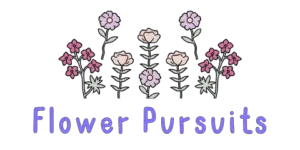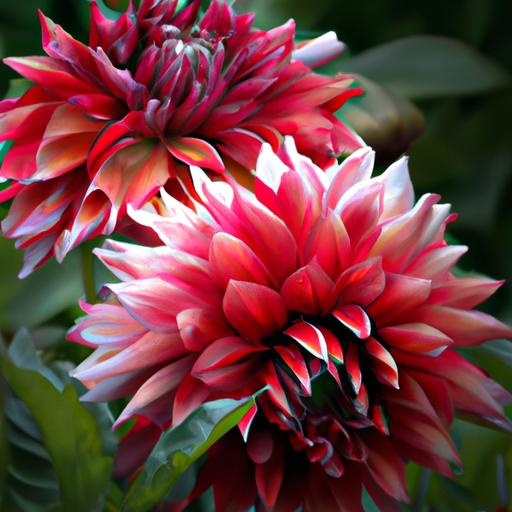Have you ever stopped to consider how the beautiful dahlia flower reproduces? It may seem like a mystery, but the fascinating facts about dahlia reproduction are actually quite astonishing.
From seed production to pollination to vegetative propagation, there are many steps involved in the process.
In this article, we’ll explore the different types of dahlia reproduction, how seed pods are formed, and the benefits and challenges of each method.
Let’s dive in and discover the amazing facts about dahlia reproduction!
Table of Contents
Short Answer
Dahlias reproduce by seed, through division, or by cuttings.
When grown from seed, a dahlia will usually bloom in its second season.
To divide a dahlia, the tuberous roots should be dug up and divided into sections, each with at least one bud.
Cuttings can be taken in late spring or early summer and rooted in a mixture of soil and sand.
Water regularly and provide plenty of light, and the cuttings should develop roots and be ready for transplanting in about three to four weeks.
Types of Dahlia Reproduction
Dahlia reproduction is a fascinating process that relies on both seed production and vegetative propagation to keep the species alive and thriving.
Seed production occurs when the flowers on the dahlia plant are pollinated by bees, butterflies, moths, or other pollinators, leading to the formation of seed pods.
This is the primary method of dahlia reproduction, as the seeds produced will create new and unique dahlia plants.
Vegetative propagation is when new plants are grown from cuttings or tubers taken from the parent plant.
This method is faster than growing from seed, and it allows the gardener to create clones of the original parent plant.
This is done by taking a cutting from the stem of the parent plant and planting it in soil or water.
The cutting will then form its own roots and begin to grow.
Tubers are then formed and can be cut apart and replanted in the soil to create multiple new dahlia plants.
This combination of seed production and vegetative propagation ensures that the dahlia species continues to thrive and produce beautiful and vibrant flowers.
For gardeners, this means that they have the option to create unique dahlia plants via seed production or create clones of their favorite dahlia plants via vegetative propagation.
Either way, dahlia reproduction is an amazing process that is sure to delight gardeners of all levels!
Seed Production

When it comes to understanding how dahlias reproduce, it is essential to understand seed production.
Seed production occurs when the flowers on the dahlia plant are pollinated by bees or other pollinators.
This pollination process leads to the formation of seed pods.
Each seed pod contains a number of seeds which can be collected and used for propagation.
The dahlia flower itself consists of a number of stamens, or male reproductive organs, and a single pistil, or female reproductive organ.
When a bee or other pollinator visits the flower, it transfers pollen from the stamens to the pistil.
This process of pollination leads to the formation of the seed pod.
The seed pod is a hard, dry capsule which contains a number of seeds.
Each seed is composed of a small embryo, a protective coat, and a food source.
The food source provides sustenance for the young plant until it is able to photosynthesize on its own.
When the seed is mature, the pod bursts open and the seeds are dispersed.
By understanding the process of seed production, it is easy to see how dahlias can be reproduced.
The seeds from the seed pods can be collected and planted in a suitable environment.
In optimal conditions, the seeds will germinate and grow into new dahlia plants.
Pollination of Dahlia Flowers
Dahlias are a beautiful and popular flower that come in a wide variety of shapes and colors.
While they may look quite delicate, these stunning blooms are surprisingly resilient and can be grown in almost any climate.
But how do dahlias reproduce? The answer is a combination of seed production and vegetative propagation.
The first step in the reproductive cycle of a dahlia is pollination.
Pollination is the process by which pollen is transferred from one flower to another, allowing for the production of seeds.
For dahlias, this is usually achieved with the help of bees and other pollinators.
When a bee lands on a dahlia flower, it picks up pollen from the male part of the flower (the stamen) and carries it to the female part of the flower (the stigma).
This process can also be achieved by wind or other means, but most dahlia flowers rely on bees for pollination.
Once pollination has occurred, the flower will begin to form a seed pod.
This seed pod contains the seeds that will eventually become new dahlia plants.
The seed pod will mature over time, and when mature, it will burst open to release the seeds.
Once the seeds are released, they can be planted in the soil to produce new dahlia plants.
In addition to seed production, dahlias can also be propagated vegetatively.
This means that new plants can be grown from cuttings or tubers taken from the parent plant.
This method is often faster than growing from seed and allows the gardener to select a clone of the parent plant.
In addition, the cutting or tuber will often produce a new flower much sooner than a seed would.
So there you have it! Now you know how dahlias reproduce.
Through a combination of seed production and vegetative propagation, dahlias can be propagated quickly and easily in the garden.
Formation of Seed Pods

Dahlias are a popular flowering plant that are known for their bright and vibrant colors.
They reproduce through a combination of seed production and vegetative propagation.
When it comes to seed production, the flowers on the dahlia plant are pollinated by bees or other pollinators, which can lead to the formation of seed pods.
These seed pods are the key to the dahlias reproduction process.
The seed pods form when the flowers are pollinated by the bees or other pollinators.
The pollination causes the anthers on the flowers to open and release their pollen, which is then carried to the stigma of another flower.
If the pollen is successful in reaching the stigma, then it will fertilize the flower.
This leads to the formation of a seed pod.
The seed pod will then remain on the plant until it matures and is ready to disperse its seeds.
The seed pods are typically green and oval-shaped.
Inside the seed pods, there are many small seeds that are brown in color.
When the seed pods mature, they will start to turn brown and will eventually open up.
The opening of the seed pod will reveal the seeds, which can then be dispersed by the wind or other animals.
So, when it comes to dahlia reproduction, the formation of seed pods is a crucial step in the process.
Without the seed pods, the dahlias wouldnt be able to reproduce.
Thankfully, the flowers are easily pollinated by bees and other pollinators, so the formation of seed pods is not a difficult process.
Vegetative Propagation
Vegetative propagation is a common and efficient way of reproducing dahlias.
It is a method of asexual reproduction, which allows the gardener to quickly and easily replicate a desirable plant without having to wait for it to go through the lengthy process of seed production.
This is especially beneficial for gardeners who want to grow a specific clone of the parent plant.
Vegetative propagation is done by taking cuttings or tubers from the parent plant.
Cuttings are pieces of the stem or root that are cut from the parent plant and then planted in soil.
Tubers are thick, fleshy underground stems that store energy and nutrients and can be replanted to grow new plants.
Once the cuttings or tubers are planted in soil, they will begin to grow, forming a new plant that is identical to the parent.
Vegetative propagation is a great way to quickly and easily reproduce dahlias.
It is faster than growing from seed, allows for the production of clones, and can be done with minimal effort.
However, it is important to be careful when taking cuttings or tubers, as too much damage to the parent plant can be detrimental to its health.
Benefits of Vegetative Propagation

When it comes to reproducing dahlias, vegetative propagation is a great option.
It is faster than growing from seed and allows the gardener to clone the parent plant, ensuring that the new plants are exact replicas of the original.
This means that the desired characteristics of the parent plant, such as flower color, plant size, and overall health, can be maintained.
Furthermore, vegetative propagation eliminates the need for pollination, which can be time consuming and difficult to achieve.
It also eliminates the need for planting seeds, which can be expensive and time consuming.
Additionally, since the parent plant is already established, the gardener can expect a better success rate when propagating using vegetative methods.
Finally, vegetative propagation is an easy and convenient way to propagate dahlias, as it requires fewer resources than growing from seed.
Challenges of Dahlia Reproduction
When it comes to reproduction, dahlias can present a number of challenges.
When growing from seed, it can be difficult to predict the exact characteristics of the resulting flowers, and the plants can take several years to reach maturity and begin flowering.
Dahlias grown from seed can also be susceptible to diseases and pests, as the genetic diversity of the population is limited.
Vegetative propagation, while providing more reliable results, also presents its own set of challenges.
Cuttings can be difficult to take without damaging the parent plant, and tubers must be handled with care in order to avoid rot and disease.
Additionally, the process of taking cuttings or removing tubers can be time consuming and labor intensive.
Finally, dahlias can be prone to damage from extreme weather conditions, which can make them difficult to maintain in some climates.
Cold temperatures can cause the plants to go dormant, while too much heat and humidity can cause the flowers to wilt and the leaves to turn yellow.
In addition, the plants require regular watering and fertilizer in order to remain healthy and produce flowers.
Final Thoughts
Dahlias are a beautiful and versatile plant that can easily be reproduced with the help of pollinators and the gardener’s own hands.
By understanding the combination of seed production and vegetative propagation, gardeners can make dahlia plants that are clones of the parent plant and create a stunning display of blooms for years to come.
With the right knowledge and care, anyone can successfully reproduce dahlias and create a gorgeous garden.

